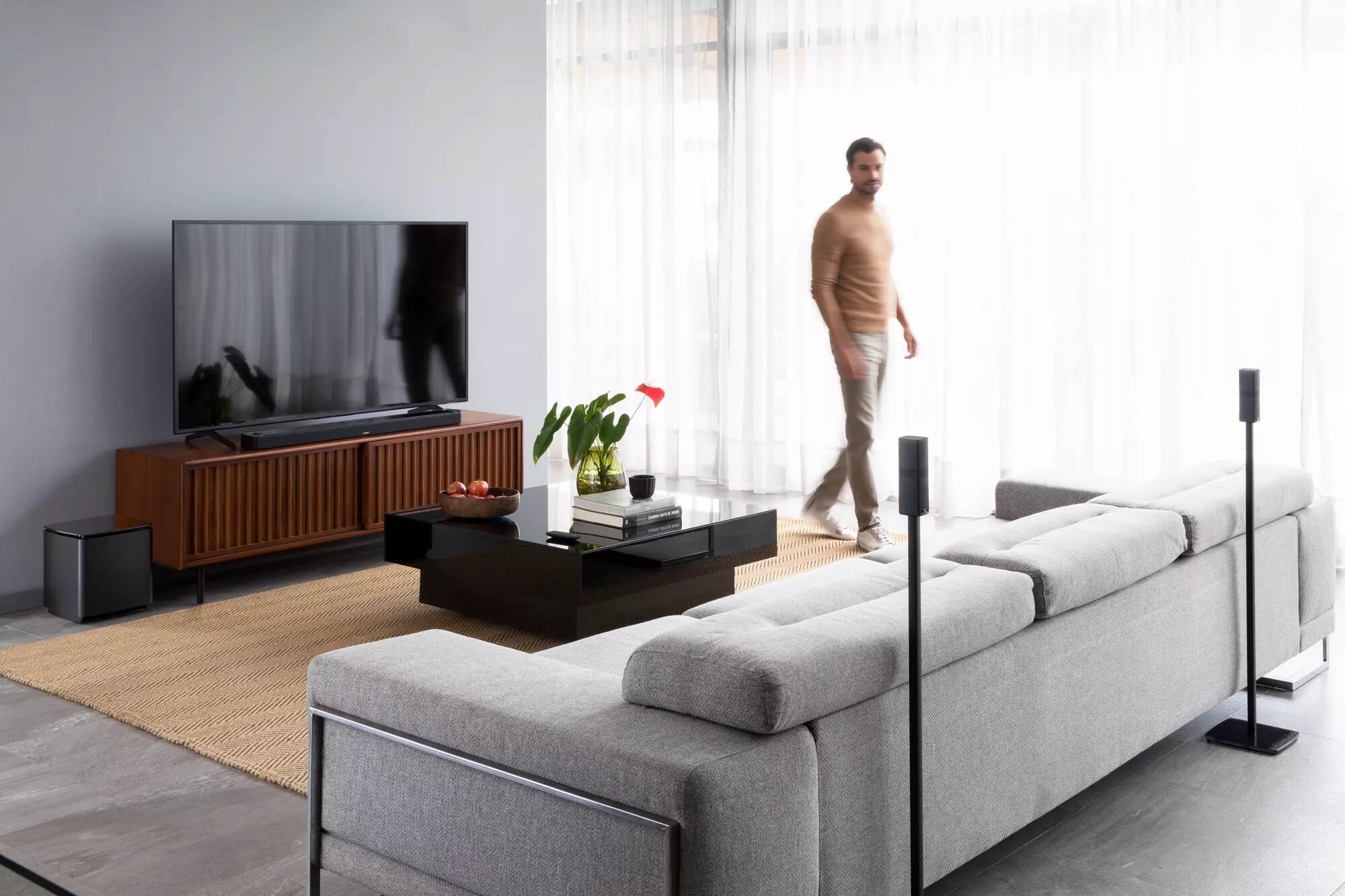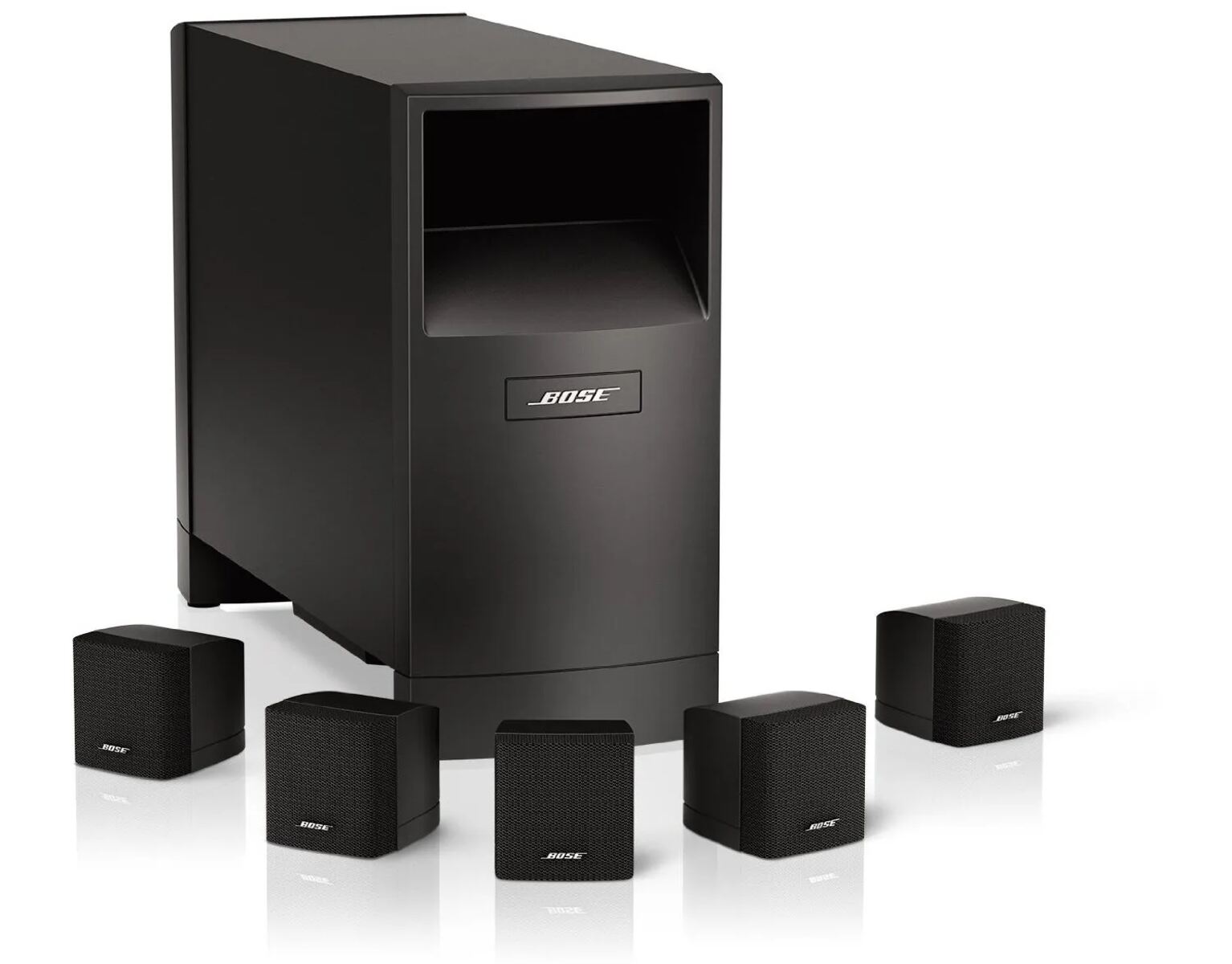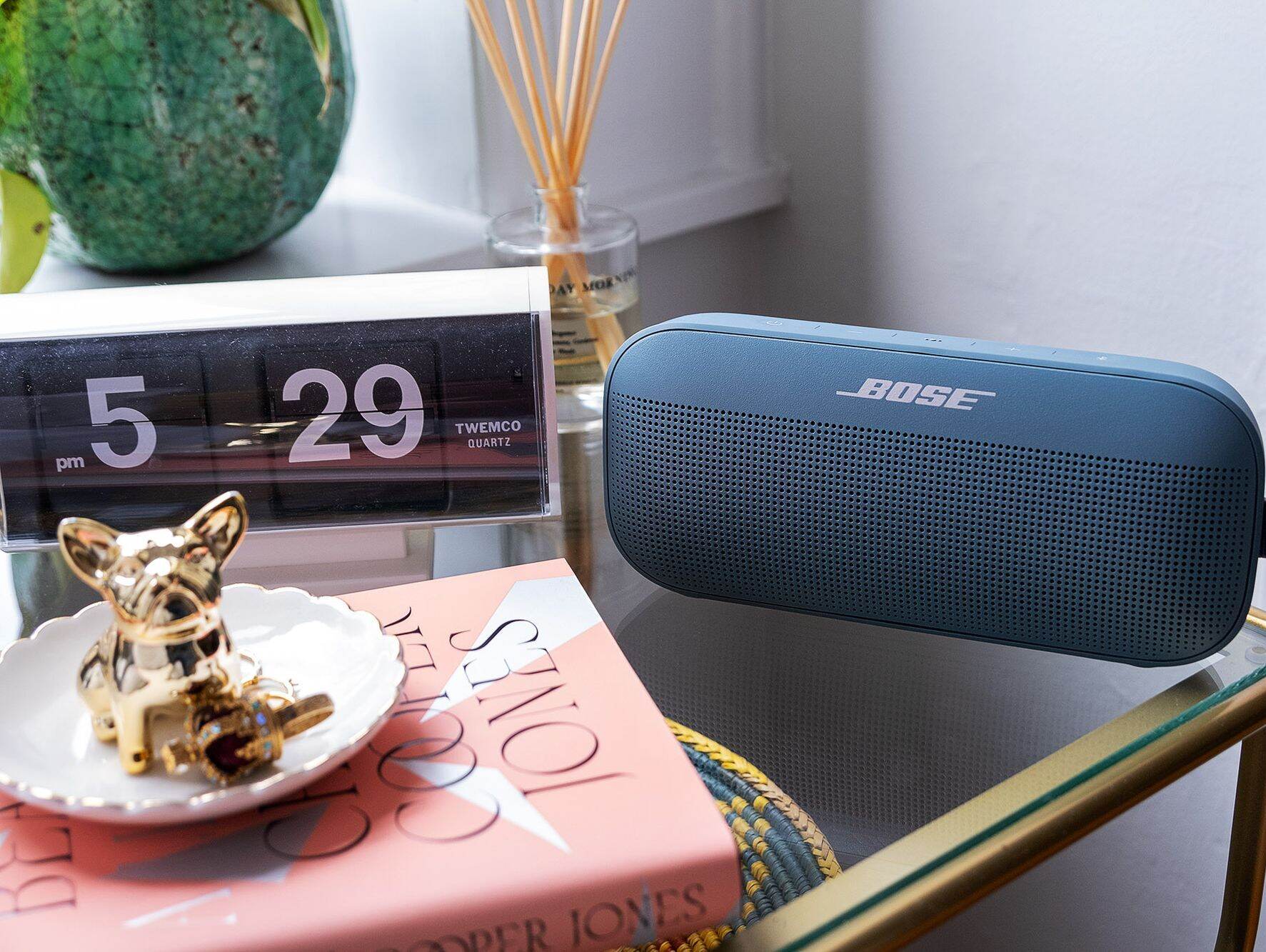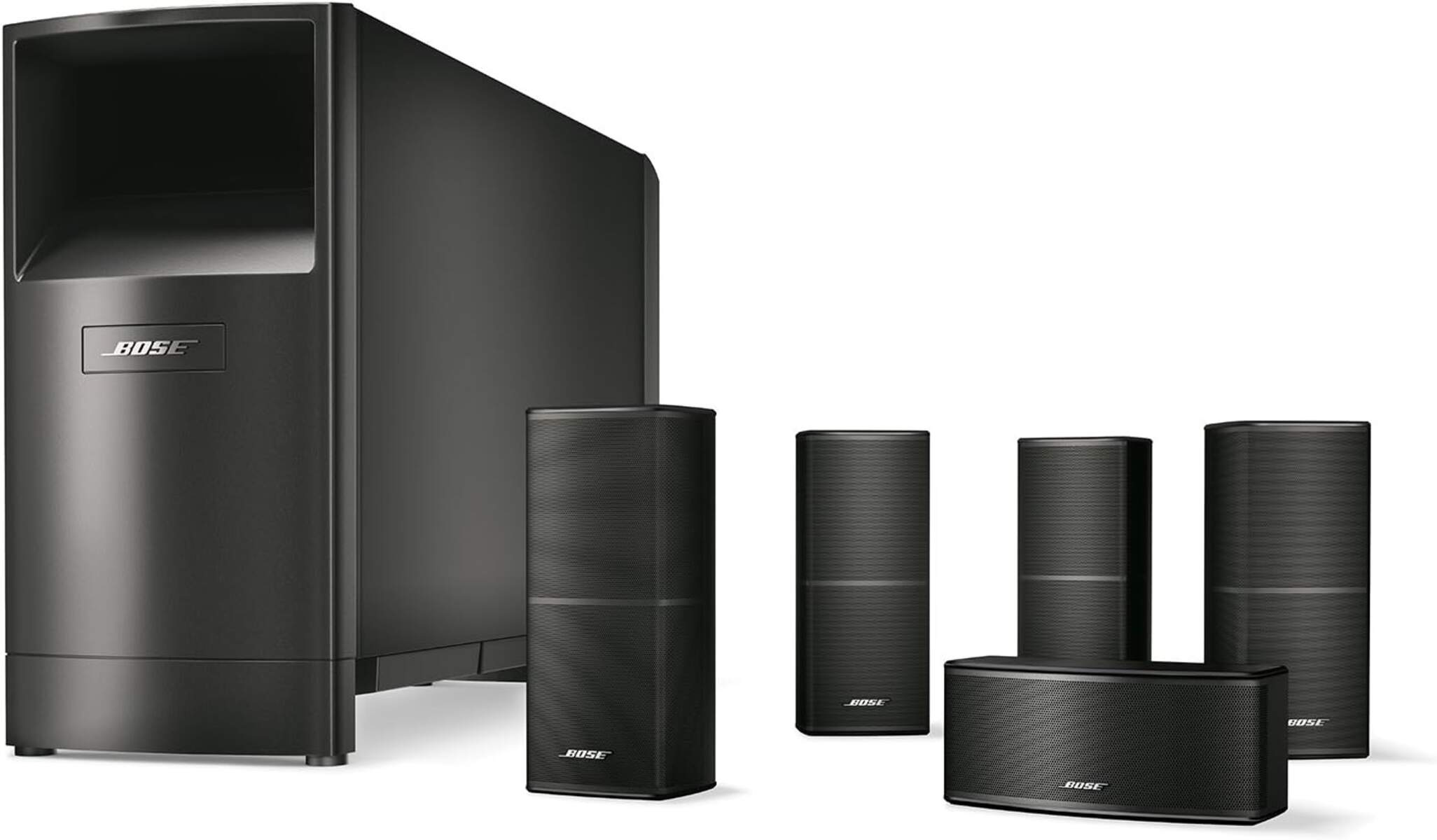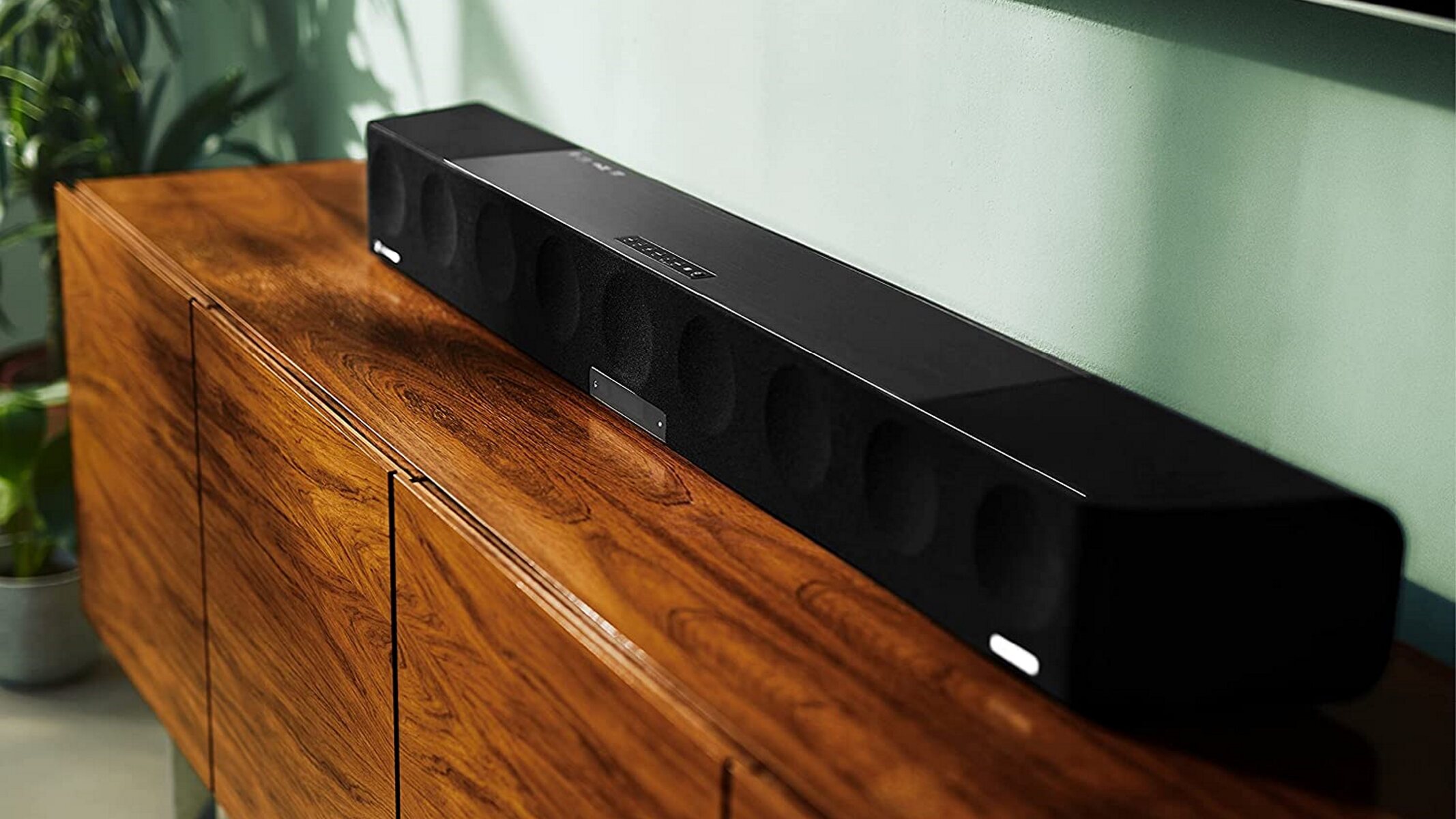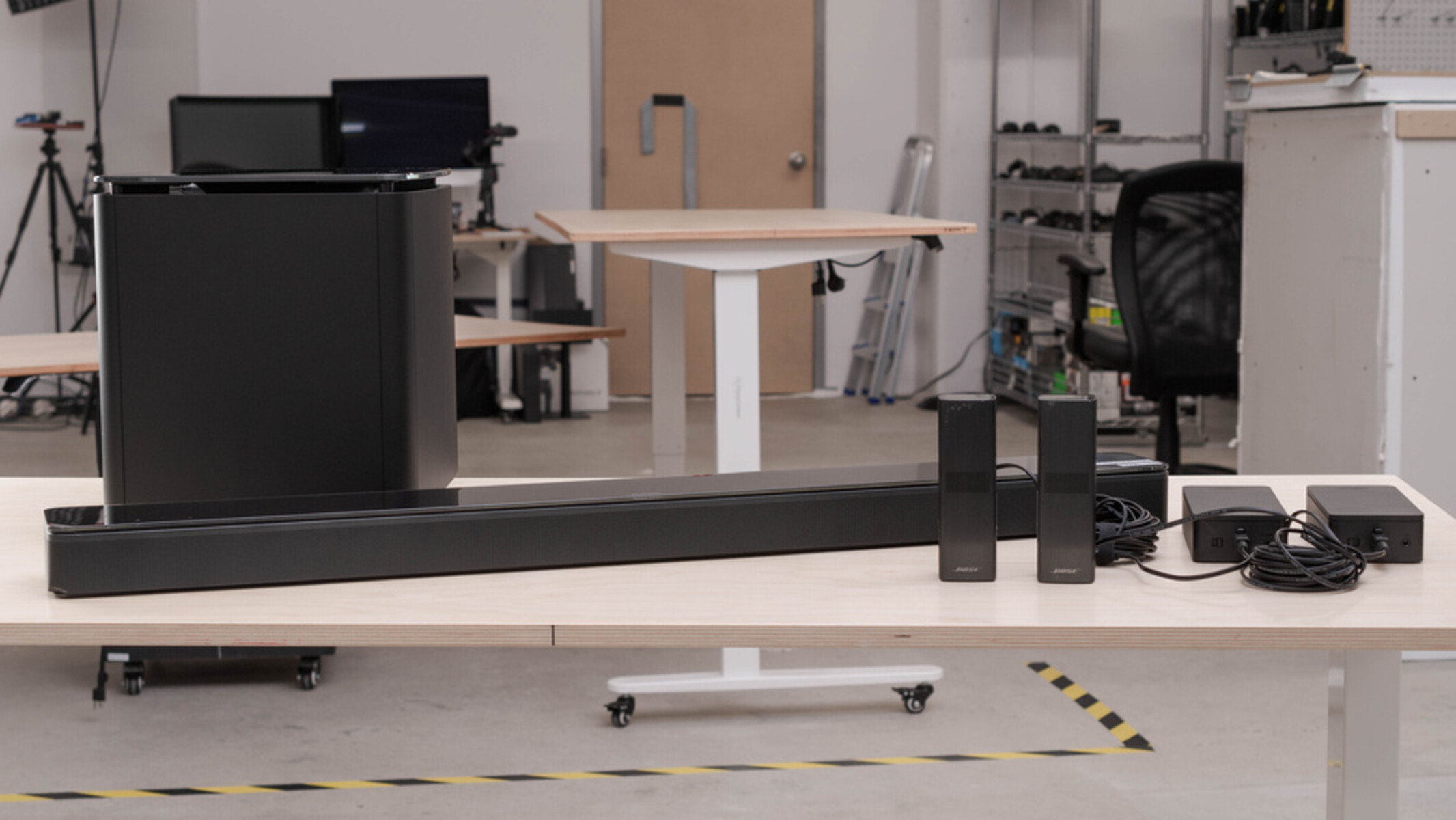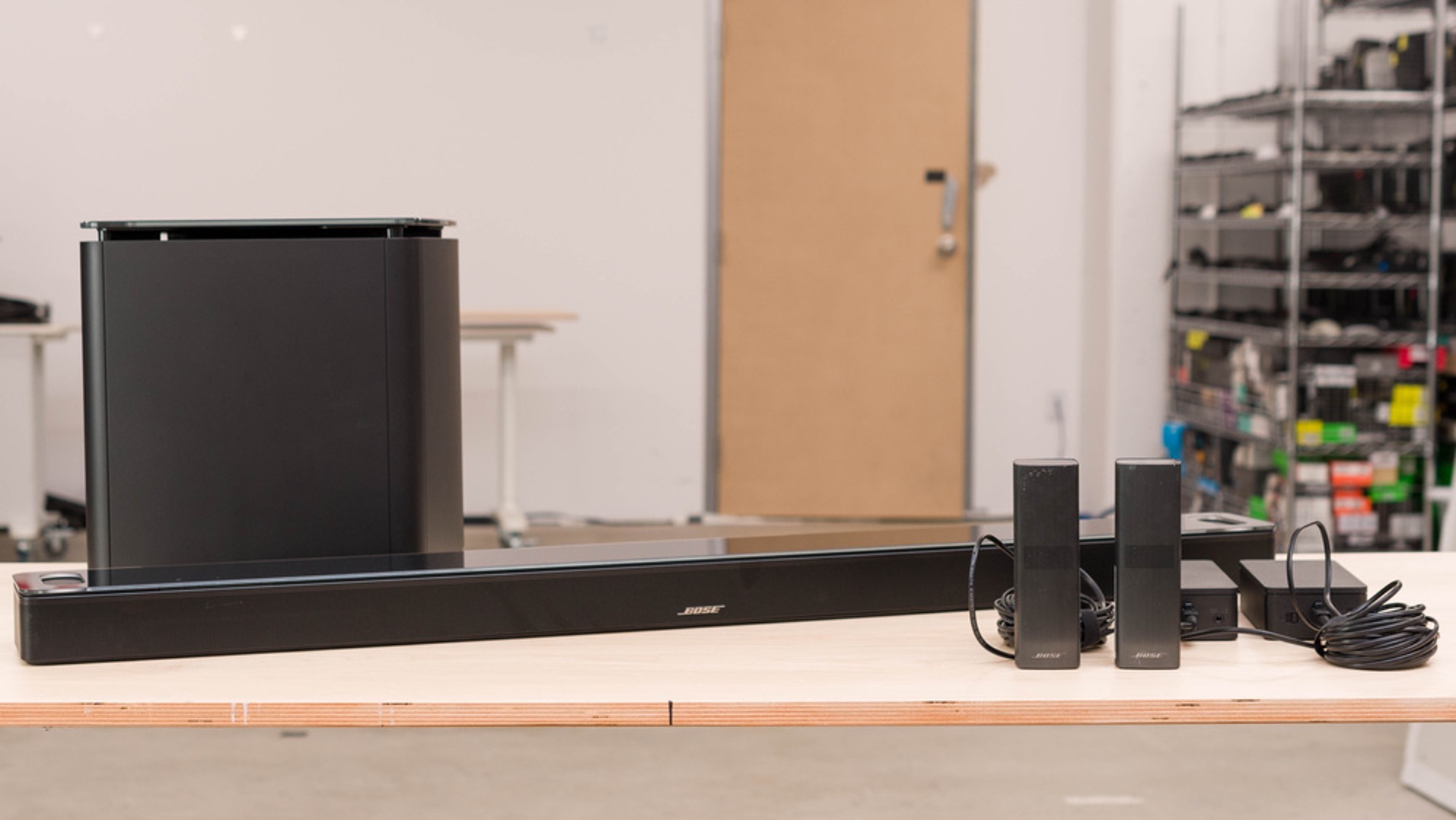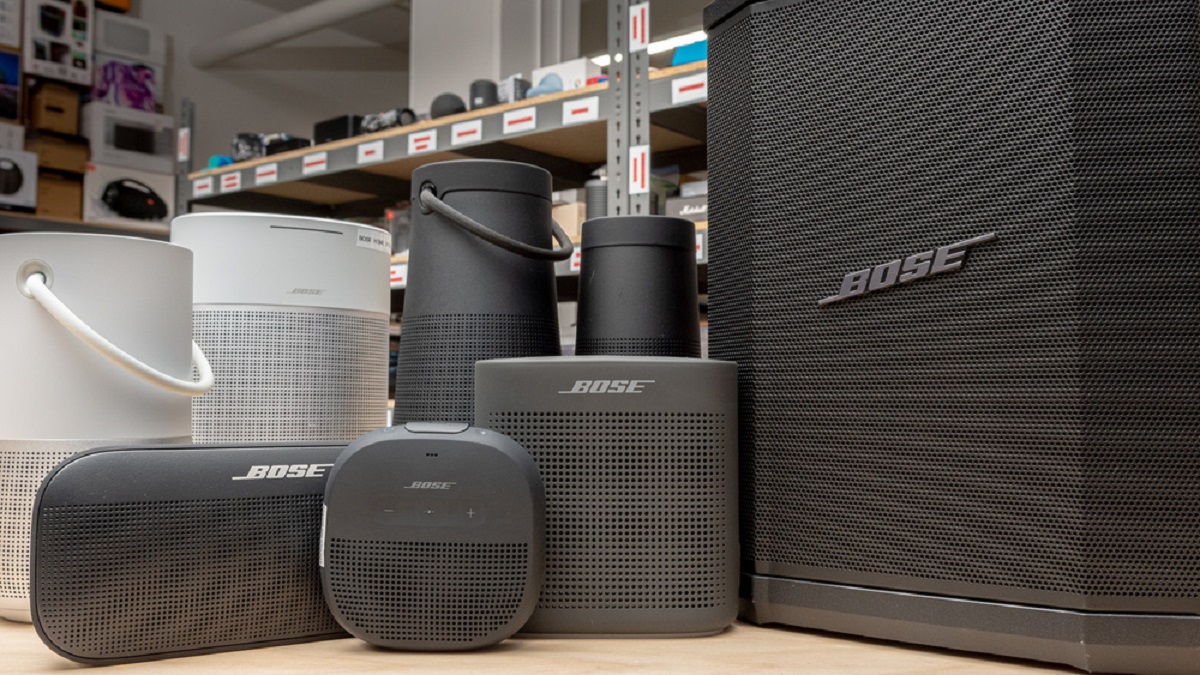Introduction
Welcome to the world of immersive audio experience with the Bose Surround Sound System. Whether you’re a movie enthusiast or a music lover, this state-of-the-art audio system is designed to bring your entertainment to life with exceptional clarity and depth. In this guide, we’ll show you how to set up and make the most of your Bose Surround Sound System, taking your audio experience to new heights.
With its sleek design and advanced technology, the Bose Surround Sound System offers a seamless integration with your existing home theater setup. From blockbuster movies to your favorite music albums, you’ll feel every beat and hear every detail like never before. Say goodbye to flat and tinny sound and immerse yourself in a whole new level of audio excellence.
But before we delve into the setup and optimization of your Bose Surround Sound System, it’s important to understand the basics. This sophisticated audio system consists of multiple speakers strategically positioned around the room, creating an enveloping sound field that enhances your viewing and listening experience. By placing speakers at different points, the system can simulate directional sound and provide a more realistic and immersive effect.
Now that you have a brief overview of what the Bose Surround Sound System can offer, let’s dive into the setup process and get you on your way to enjoying a cinematic audio experience in the comfort of your own home.
Setting up your Bose Surround Sound System
Setting up your Bose Surround Sound System is a straightforward process that can be completed in a few simple steps. Here’s a step-by-step guide to help you get started:
- Choose the ideal location: Begin by selecting the optimal location for your Bose Surround Sound System. Ensure that the speakers are positioned strategically around the room to create an immersive sound experience. The front speakers should be placed near the television, while the rear speakers should be positioned behind or to the sides of the seating area.
- Connect the speakers: Once you’ve determined the placement, connect the speakers to the main receiver or audio/video (AV) receiver. Follow the color-coded speaker wire connections for a hassle-free setup. Make sure to securely attach each wire to the corresponding terminals to ensure optimal audio performance.
- Connect the AV receiver: Connect the AV receiver to your television using an HDMI cable or an optical audio cable. This connection allows the audio signals to pass from your TV to the Bose Surround Sound System, enhancing your audio experience.
- Power on the system: Plug in all the components of the Bose Surround Sound System and power them on. Ensure that the speakers, AV receiver, and TV are all turned on and properly connected.
- Calibrate the system: Many Bose Surround Sound Systems come with an automatic calibration feature that adjusts the audio settings based on your room’s acoustics. Follow the on-screen prompts or refer to the user manual to calibrate the system for optimal performance.
- Test the sound: Once the setup is complete, play a test audio or video clip to ensure that all the speakers are functioning correctly. Adjust the volume levels as needed to achieve the desired balance between the speakers.
- Explore additional features: Your Bose Surround Sound System may come with additional features, such as wireless connectivity or smart home integration. Take the time to explore and set up these features for a more personalized and convenient audio experience.
By following these steps, you can set up your Bose Surround Sound System with ease and start enjoying a fully immersive audio experience in your home.
Connecting your Bose Surround Sound System to your TV
Connecting your Bose Surround Sound System to your TV allows you to enjoy enhanced audio while watching your favorite shows and movies. Here’s a step-by-step guide on how to make the connection:
- Determine the type of audio connection: Check the available audio output ports on your TV. The most common options are HDMI, optical audio, and RCA. Choose the one that suits your TV and audio system configuration.
- Connect using HDMI: If your TV and Bose Surround Sound System have HDMI ports, connect one end of an HDMI cable to the HDMI output port on the audio/video (AV) receiver and the other end to the HDMI input port on your TV. This connection allows for both audio and video signals to pass through a single cable, simplifying the setup process.
- Connect using optical audio: If your TV has an optical audio output port and your Bose Surround Sound System has an optical audio input port, connect one end of an optical audio cable to the TV’s optical audio output and the other end to the audio system’s optical audio input. This connection is ideal for transmitting high-quality digital audio signals.
- Connect using RCA cables: If your TV and audio system have RCA ports, connect the red and white RCA cables from the TV’s audio output ports to the corresponding input ports on your Bose Surround Sound System. This connection method transmits analog audio signals.
- Select the audio input on your Bose system: Once the physical connections are made, use the remote control or the control panel on your Bose Surround Sound System to select the appropriate audio input source. This ensures that the system receives the audio signals from your TV correctly.
- Adjust audio settings: Depending on your TV and audio system, you may need to adjust the audio settings. Navigate to the settings menu on both devices and make any necessary changes, such as enabling surround sound or adjusting volume levels.
- Test the audio: Play a video or audio clip on your TV to test the audio output through your Bose Surround Sound System. Ensure that the sound is coming from all the speakers and that the volume is balanced according to your preferences.
By following these steps, you can easily connect your Bose Surround Sound System to your TV and elevate your viewing experience with immersive and high-quality audio.
Adjusting the audio settings on your Bose Surround Sound System
Adjusting the audio settings on your Bose Surround Sound System allows you to fine-tune the sound to your preferences and optimize your audio experience. Here are some tips on how to customize the audio settings:
- Access the audio settings: Depending on the model of your Bose Surround Sound System, you can access the audio settings through the menu on the control panel or using the remote control. Look for options such as “Audio,” “Sound,” or “Settings.”
- Equalizer settings: The equalizer settings allow you to adjust the balance of different frequency bands, such as bass, midrange, and treble. Experiment with the settings to find the optimal balance for your listening preferences, whether you prefer a stronger bass or a more prominent midrange.
- Surround sound modes: Many Bose systems offer different surround sound modes, such as “Movie,” “Music,” or “Sports.” These modes enhance specific audio elements based on the content you’re watching or listening to. Try out different modes to find the one that best suits your preferences and the type of entertainment you’re enjoying.
- Speaker level adjustments: If you feel that certain speakers in your Bose system are too loud or too soft compared to others, you can adjust the individual speaker levels. This allows you to balance the sound output across all the speakers to achieve a uniform and immersive audio experience.
- Room calibration: Some Bose Surround Sound Systems come with room calibration features that analyze the acoustics of your room and optimize the audio output accordingly. Follow the instructions provided with your system to calibrate the sound specifically for your room, ensuring the best possible audio quality.
- Night mode: If you need to lower the volume for late-night viewing while maintaining clarity, look for a “Night Mode” setting. This feature helps minimize the dynamic range of the sound, reducing the volume difference between soft and loud sounds, without compromising the overall audio experience.
- Dialogue enhancement: For clearer dialogue in movies or TV shows, check if your Bose system has a dialogue enhancement feature. This setting boosts the vocals, making them more pronounced and easier to understand, especially during scenes with background noise or action sequences.
Remember to make small adjustments and listen to the audio changes as you go. Take the time to find the settings that suit your preferences and create the most immersive and enjoyable audio experience with your Bose Surround Sound System.
Using the remote control for your Bose Surround Sound System
The remote control is a vital tool for operating your Bose Surround Sound System and accessing its various features. Here are some key functions and tips for effectively using the remote control:
- Power on/off: The power button allows you to turn the entire system on or off with a single press. Make sure the remote control has a clear line of sight to the system for reliable operation.
- Volume control: The volume buttons on the remote control enable you to adjust the audio level to your liking. Simply press the “+” button to increase the volume and the “-” button to decrease it. Test the volume levels to find the ideal balance between dialogue, music, and sound effects.
- Source selection: Use the source or input button to switch between different audio input sources, such as TV, DVD player, or gaming console. This allows you to seamlessly switch between devices without needing to manually change the connections.
- Menu navigation: Many Bose remote controls feature a menu navigation pad or arrow buttons. Use these controls to navigate through the system’s menu options and make adjustments to audio settings, equalizer settings, and other features.
- Mute function: When you need to quickly silence the audio, the mute button comes in handy. Pressing this button temporarily mutes the sound, perfect for when you receive a phone call or need to have a brief conversation without disrupting the audio experience.
- Smart features: Depending on the model and capabilities of your Bose Surround Sound System, the remote control may have additional smart features. These can include voice control, app integration, or even home automation functions. Consult the user manual to explore and set up these features.
- Programming and syncing: If you have a universal remote control or want to sync your Bose remote control with other devices, follow the instructions provided by the manufacturer. This allows you to consolidate control of multiple devices into a single remote for added convenience.
Remember to keep the remote control in a safe and easily accessible location, ensuring it doesn’t get misplaced or damaged. Familiarize yourself with its functions and take advantage of its capabilities to fully control and enhance your audio experience with your Bose Surround Sound System.
Troubleshooting common issues with your Bose Surround Sound System
While the Bose Surround Sound System offers exceptional audio performance, you may occasionally encounter some common issues that can be easily resolved. Here are some troubleshooting tips for addressing these issues:
- No sound: If you’re not hearing any sound from your Bose system, first ensure that all connections are secure and properly plugged in. Check the audio input settings on the TV and the Bose system to ensure they match. Additionally, verify that the volume is turned up and not muted on both the system and the TV.
- Audio imbalance: If you notice an imbalance in sound levels between the speakers, use the speaker level adjustment feature on your Bose Surround Sound System to balance the audio output. Make small adjustments to each speaker until the sound is distributed evenly throughout the room.
- Interference or distorted sound: If you experience interference or distorted sound, ensure that there are no other electronic devices or sources of electromagnetic interference near the Bose system. Move away any potential sources of interference, such as wireless routers, mobile phones, or cordless phones, and test the audio quality again.
- Audible hum or buzzing: A hum or buzzing sound can sometimes be caused by grounding issues or faulty connections. Double-check all the connections between the speakers, AV receiver, and TV, ensuring they are secure. If the issue persists, try plugging the system into a different power outlet or consult the Bose support center for further assistance.
- Remote control not working: If your remote control is not functioning properly, check if the batteries are inserted correctly and have sufficient charge. Ensure there are no obstructions between the remote control and the Bose system. If needed, reprogram or sync the remote control according to the instructions in the user manual.
- Software/firmware updates: Occasionally, software or firmware updates may be available for your Bose Surround Sound System. Check the Bose website or the system’s user manual for instructions on how to check for and perform updates. Keeping your system up to date can resolve any known issues and improve overall performance.
- Contact Bose support: If you have tried the troubleshooting tips mentioned above and continue to experience issues with your Bose Surround Sound System, it is advisable to contact the Bose support center. They have trained technicians who can provide further guidance and assist you in resolving any technical issues.
Remember, troubleshooting steps may vary depending on the specific model of your Bose system. Refer to the user manual or contact Bose support for model-specific troubleshooting information. By following these steps, you can quickly resolve common issues and ensure that your audio system continues to deliver exceptional sound quality.
Enhancing your audio experience with additional speakers
If you’re looking to elevate your audio experience even further, you can enhance your Bose Surround Sound System by adding additional speakers. These speakers can complement your existing setup and provide a more immersive surround sound experience. Here are some options to consider:
- Subwoofer: Adding a subwoofer to your Bose system can significantly enhance the low-frequency response, delivering deep and powerful bass. A subwoofer creates a more immersive audio experience, especially when watching action movies or listening to music with impactful basslines.
- Center channel speaker: The addition of a center channel speaker improves the clarity and intelligibility of dialogues. This dedicated speaker channel is positioned in the center of the soundstage and reproduces the majority of vocals and dialogues, ensuring they are clear and easily understandable, even during intense action scenes or fast-paced dialogue exchanges.
- Surround speakers: To create a true surround sound experience, consider adding surround speakers to your setup. These speakers are placed behind or to the sides of the viewing area and reproduce ambient sounds and effects, enhancing the sense of immersion by enveloping you in sound. With surround speakers, you can truly feel like you’re in the midst of the action.
- Height speakers: If you want to take your audio experience to new heights, consider adding height speakers or upward-firing speakers. These speakers create a sense of verticality by bouncing sound off the ceiling, immersing you in a three-dimensional audio environment. Height speakers are especially beneficial for content that supports object-based audio formats like Dolby Atmos or DTS:X.
- Wireless speakers: If running wires throughout your room is a challenge, consider wireless speakers. Many Bose systems offer wireless speaker options that can be easily connected to the main system without the need for long cables. This provides flexibility in speaker placement and helps maintain a clean and clutter-free setup.
When adding additional speakers to your system, ensure they are compatible with your Bose Surround Sound System and follow the manufacturer’s instructions for installation and setup. Take the time to calibrate the audio settings to optimize the performance of the new speakers and maintain the overall balance of the audio system.
By strategically choosing and adding these additional speakers, you can further enhance your audio experience, immersing yourself in a captivating soundstage that brings movies, music, and games to life.
Conclusion
Congratulations on setting up and optimizing your Bose Surround Sound System! With its exceptional audio quality and immersive capabilities, you can now enjoy a truly remarkable audio experience in the comfort of your own home. By following the steps outlined in this guide, you have learned how to set up the system, connect it to your TV, adjust the audio settings, use the remote control, troubleshoot common issues, and even enhance your audio setup with additional speakers.
Through careful calibration, customization of audio settings, and proper placement of speakers, you can create a cinematic audio environment that transports you into your favorite movies, TV shows, and music. The rich and lifelike sound produced by your Bose system will immerse you in a world of breathtaking audio clarity and depth.
Should you encounter any issues along the way, remember to consult the troubleshooting tips provided in this guide or reach out to the Bose support center. They are always available to assist you in getting the most out of your audio system.
Now, sit back, relax, and enjoy the captivating audio experience that your Bose Surround Sound System brings to your entertainment moments. Whether you’re engulfed in the explosive action of a blockbuster movie or savoring the intricacies of your favorite music tracks, your Bose system will ensure that every sound is delivered with precision and impact.
Thank you for choosing Bose, and we hope you have many memorable moments filled with exceptional audio quality.







